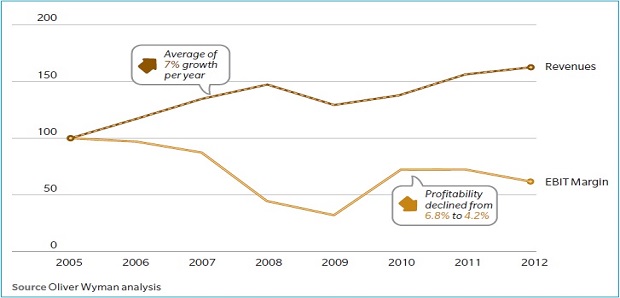Despite increasing revenues, only a small number of logistics services providers are seeing increased profitability. Companies that want to grow their logistics business profitably must do more than just adjust a few cost levers, or hope to achieve scale or synergy effects by way of acquisitions. They must be willing to pursue fundamental change and challenge how things have been done in the past. Oliver Wyman has identified six levers that can help logistics services providers unlock greater profits in a growth market.
The top logistic companies face a significant gap between revenue and profitability
An analysis of 100 leading global logistics companies – which has been ongoing since 2005 – found that these companies are achieving impressive revenue growth of 7 percent per year on average.At the same time, however, their profitability has significantly declined, from 6.8 to 4.2 percent EBIT during the 2005–2012 period.

Only 35% of the top global 100 logistics companies have grown profitably since 2005Joris D'Incà, Partner






